Your webmaster made fitful forays into extreme southwestern Staten Island (the old town of Westfield) in the 1960s (I seem to remember a bus ride with my parents past endless fields of nothing (likely Arthur Kill Road, which still has a lot of empty stretches) and a two-lane roadway (that was probably Drumgoole Boulevard) and a few years later in the early 1970s, a similar journey, this time alone. I didn’t carry a camera with me everywhere then – I’d like a ride in H.G. Wells’ time machine to correct that error – since much of the southwestern part of the island in no way resembles what it did in the 1960s and 1970s, when the development launched by the completion of the Verrazano-Narrows Bridge in 1964 hadn’t yet spread very far.
Prince’s Bay, Pleasant Plains, Richmond Valley, and Tottenville are small “towns” in all but name, since they were automatically absorbed into NYC in 1898 and their status immediately changed to neighborhoods in a big city. In many ways, they’ve carried on exactly as before. Nassau and Atlantic? For their origin…read on…
Prince’s Bay
After the Revolutionary War ended, New York City virtually divested itself of royal place names, though Prince Street in Manhattan and Kings Highway in Brooklyn are still there. This small neighborhood in southeastern Staten Island, according to tradition, is so-called because before the War, a British prince, the Duke of Nassau, who later became William III once anchored a vessel in the bay at the foot of today’s Seguine Avenue. The name of the area is properly spelled with an apostrophe, though variants due to mispronunciation like “Princess Bay” have appeared in print, and the local post office styles itself as Princes Bay, without the punctuation. The French Huguenot Seguine family were early settlers in the area: Seguine Avenue, Prince’s Bay’s major north-south thoroughfare, is lined south of Hylan Boulevard with craggy osage orange trees planted by the Seguines at the encouragement of family friend Frederick Law Olmsted, the co-creator of Central and Prospect Parks, who lived nearby in Eltingville. Annadale, as we’ve seen in the previous Stations of the SIRT page, is named for a family member, Anna Seguine.
Prince’s Bay was once a prime area for oyster fishing and harvesting; African-American oyster fishermen founded nearby Sandy Ground in the mid-19th Century. The Samuel Stockton White Dental Manufacturing Company, the largest manufacturer and inventor of dental tools in the world in the 1800s and part of the 1900s, originated in Philadelphia but maintained a huge plant here between 1937 and 1972. Now S.S. White Technologies based in Piscataway, NJ, the company currently produces flexible airshafts for aircraft, and state of the art surgical instruments.
Prince’s Bay SIRT station is located on Seguine Avenue two blocks south of Amboy Road. It probably uses the glass blocks seen elsewhere on SIRT stations to the greatest degree, and its little alcoves and benches in shady areas make it one of the more comfortable places to wait for a train in the system. Prince’s Bay was the last SIRT to feature a platform made of wood planks, which survived till a renovation in the early 1990s. Only the now-closed Dean Street on the BMT Franklin Shuttle lasted longer with wood planks on NYC rail stations.
Vintage Prince’s Bay
The photos above left show Prince’s Bay in the early 1960s, when standard steel cars worked the SIRT, and the early 1970s, after the standards were phased out and MP50 Long Island Rail Road cars filled in till modified R44 cars, which still run today, were delivered. A steam train approaches the Seguine Avenue crossing around 1910 or 1915.
Note the relatively primitive planks on the platform and goose neck incandescent lights.
Scenes from Seguine
Stepping off the train isn’t initially promising if you’re and architecture buff (though the Joseph Seguine Mansion, 1840, and historic though now-boarded up Manee-Seguine homestead, early 1700s, can be viewed on Seguine Avenue south of Hylan Boulevard).
Prince’s Bay carries on the dancing school tradition your webmaster has noticed at Staten and Long Island train stations. Has Staten Island produced a lot of Broadway dancers or Rockettes? And, street art in this part of town is somewhat tamer than other neighborhoods.
Turn the corner to Florence Place and there’s this symmetrical gem, with twin porches, though I could do without that glazed tile job.
You’ll never be out of shape taking the stairs to this house on Bayview Avenue just south of the railroad.
From Woodvale Avenue. Southwest Staten Island has many small clapboard houses, most of them with front porches. Check the aged conifer at right.
Lemon Creek, the largest of southwest Staten Island’s many creeks and rivulets, crosses Amboy Road under a bridge east of newly-stoplit Maguire Avenue.
Woodvale Avenue follows a twisting route under the railroad, seen south from Amboy Road. Using Lemon Creek as a feeder, the city is constructing a decorative pond.
The Catholic Church of St. Joseph- St. Thomas is flanked by two contrasting styles, both from ca. 1900 — its rectory, above left, and a turreted house with a stick-style porch. Houses from around 1900 have windows sticking out from all angles, making for varying views.
The church has a separate bell tower; we’ll see another later.
ForgottenFan Allie Brim: St. Joseph-St. Thomas (notice no “and” there) has always been one parish. St. Joseph was built over in Rossville in 1848 and still stands today. As the South Shore continued to grow, the parish received permission to build a mission church in Pleasant Plains. Hence, St. Thomas was built in 1939. The building though you have is our second St. Thomas, built in 1995, the first was destroyed by an arson.
St. Mark’s United Methodist Church, nearby on 6144 Amboy Road and Goff Avenue, has been here since about 1875.
Lady of Pleasant Plains
It’s Decoration Day sometime in the late 1930s and crowds are clustering the junction of Amboy and Bloomingdale Roads for a ceremony at the Pleasant Plains World War I monument, dedicated in 1923 and sculpted by Tottenville resident George Thomas Brewster. As we’ll see, however, the statue that stands at the junction today is an exact replica and not the one you see in the picture.
Of interest to your webmaster are the typical Staten Island street signs of the era, colored yellow and black, many of which survived till the mid-1960s, and the “gumball” luminaire and globe fire alarm light mounted on the telephone pole mast. Gumballs were newly in vogue and were replacing the older “acorn” pendants you see mounted on poles in the rear. Also, note that when a fire alarm indicator was mandated, the mast was simply flipped over so the metal scrollwork was at the top of the mast instead of the bottom, as usual.
Pleasant Plains Avenue is a relatively wide boulevard extending from Amboy Road only as far west at the south service road (Drumgoole Road South) of the Korean War Veterans Parkway. Until the parkway was built in 1972, however, it was much more important, since before that it was the road to the Outerbridge Crossing (1928) and thus a direct link to New Jersey from the island.
I’m sure she doesn’t mind my shooting a picture from the rear; J-Lo has nothing to worry about; and unless you’re here in the morning, the sun is right in your face in front. This is actually a replica of the original, since after 1970, after one car crash too many, she was removed to storage and was hidden too well, since no one knows what happened to it. Working from photographs, sculptor Glenn Hines, working with the fabricated by Modern Art Foundry of Queens, recreated it in 1996 and it was dedicated the following year, this time in a more substantial raised traffic island. So far, so good.
All 493 combatants from Staten Island’s former 5th Ward (including Pleasant Plains) names are inscribed on three tablets at the statue’s base. The 4th lists the 13 who lost their lives.
This building on Amboy Road was built before the war or the memorial to the war; in recent years it has hosted a succession of pizzerias and ristorantes.
A cluster of stores and buinesses, including the obligatory dance school, cluster around the next Staten Island Railway stop…
Pleasant Plains
Pleasant Plains, the neighborhood, grew up along Amboy Road after the railroad arrived, not before. It was apparently given its name by officials of the Staten Island Railroad Corporation, the original owners of what is now known as the Staten Island Railway. When the railroad line was extended to Tottenville in 1860, a station crossing Amboy Road approximately two miles north of Tottenville was named Pleasant Plains (this is one of three points at which the railroad crosses this same street; the other crossing points are just south of the Bay Terrace and Huguenot stations). Eventually, the name “Pleasant Plains” was applied to the community which soon sprung up around the station. wikipedia
There’s a short walk between Amboy Road and the platform, which is set forward a little from the street. There’s just a bit of the usual SIRT shelter and glass block treatment here, and the station railings are the only ones on the SIRT that match, for some reason, typical Long Island Rail Road station railings. West of here, a spur led to the Mount Loretto orphanage until 1950, with tracks crossing Amboy Road remaining visible until 1980 or so. Pilings that carried the tracks are still there.
Down to the Valley
West of Pleasant Plains, toward Richmond Valley, Amboy Road runs along the northern edge of the Cemetery of the Resurrection and the Mission of the Immaculate Virgin, a.k.a. Mount Loretto, established in 1882 by the Roman Catholic Church with the assistance of Father John C. Drumgoole. Labor and antiwar activist Dorothy Day (1897-1980), a Staten Island resident, is buried in the cemetery.
After curving past Bedell Street, guarded by a rare double-flashing amber light, Amboy Road enters astretch punctuated by a cluster of very old, picturesque homes…
Gorgeous 6475 dates to the early 1820s.
I like 6498, even though it’s awash in mustard. Developers must be salivating over all that land.
Stick-style arts and crafts at 6505.
Roadside Staten Island
Hollywood Garage was closed the Saturday I was by but their collection of bugs made out of household objects was in view. Apparently they do custom auto body work. The watchdog hasn’t been around since 1938.
A bit further west, Mill Creek is another of Staten Island’s protected open spaces. The creek is protected rather obviously though, with chicken wire holding back silt.
Is it a pond or just a big puddle? The decorative element in front seems to be the tipoff.
At 6713 Amboy, you have to love the detail work at the roof peak, and your webmaster is an aficionado of the colored glass panels surrounding the windows. As Kitty Kallen has reminded us, little things mean a lot.
Scaran Oil, 6767 Amboy, which owns a fleet of trucks in the same sea green color as the sign, began in 1930 as an ice and coal distributor, and has had to adjust.
A fork in the road formed by Amboy and Richmond Valley Roads marks our official entry into the neighborhood, one of Staten Island’s remoter outposts. Not much has happened in Richmond Valley, to be frank, except the 1993 opening of the massive interdenominational Gateway Cathedral on Boscombe Avenue.
The sign is interesting, since Richmond Valley had always been considered a part of Tottenville until it gained its own RR station in the 1860s. Anyone know where the 1828 date comes from?
The bridge carrying Richmond Valley Road over the railroad is notable since it still has a pair of 1950 octagonal shaft poles, that originally carried Westinghouse “cuplights.” How do I know they’re originals? Elementary…it’s the shaft apex ornament, which forms a neat line with the pole. Later ornaments, from about 1960 on, jut out a little. This bridge replaced a grade crossing in 1940.
Richmond Valley, as we’ll see, is the last of the SIRT stations that received a refurbishment in the 1980s-1990s; the new station was completed in 2000. Here the station railings revert to the style typically seen on other platforms. Northbound (St. George) trains are accessed from Amboy Road, while southbound (Tottenville) trains have agress and entrance from an odd spur of Richmond Valley Road that trails from the main road, which bridges over the tracks.
While riding south, if you are sitting on the right side, notice a spur track: the Tottenville-bound track has a non-electrified spur that once ran all the way to the Arthur Kill. The spur was built in the mid 1920s and dubbed by the [Baltimore and Ohio, which ran the SIRT until 1971] as the West Shore Line. The B&O delivered building materials to the Outerbridge Crossing construction site near the Kill. There was also a small industry on the spur known as Roselli Bros. The track remains intact today all the way to Page Ave. The switch at the spur is well kept and working. nyscubway.org
NYCSubway views of the Richmond Valley spur
The Richmond Valley Road spur (likely a part of the original road before the grade cross was eliminated) faces a goose pond. And do these guys honk.
Miles from nowhere. Views of Richmond Valley Road between Amboy and Arthur Kill Roads, one of Staten Island’s more isolated stretches. Actually a driveway to the Gateway Cathedral is being constructed here, and i wouldn’t bet on this stretch remaining as is in 5-10 years.
Paging William Page
Page Avenue and Amboy Road, 2007; same scene, about 1945. There’s not much to see on Page Avenue, unless you’re in the mood for gigantic malls and auto body shops, but note that in the photos above, you can see the same two buildings. Page Avenue is a main conduit from the Outerbridge crossing approaches to Hylan Boulevard; at one time, it was supposed to funnel traffic onto an expressway that was to run along Staten Island’s south shore, but that Mosesian project was scrapped in the 1970s.
In the 1940s, Page Avenue had some rare standalone lampposts (Type G’s to be exact). In this part of town most lamps were mounted on telephone poles, and today most still are. Page Avenue was very quiet back then. Orchard Inn Reunion
A pair of old-school traffic signs on the SE corner of Page and Amboy. These beige and black signs were phased out in favor of green a couple of decades ago. LEFT, Adelphi Avenue trails off to a dead end. If you squint you can see a ruined shack off to the right.
Page Avenue is named for William Page (1811-1885), the best known portrait painter of his era. His subjects included John Quincy Adams, James Russell Lowell, Charles Sumner and fellow Islander Colonel Robert Gould Shaw. His paintings are in the collections of the Metropolitan Museum, New York City Hall, Boston Art Museum and Harvard University. He first moved to Staten Island in the 1840s and then in the 1870s he returned to his “Octagon House” on Page Avenue in Tottenville after an eleven year stay in Italy.
His home was in a spot noted for its extreme beauty, as it overlooked the Staten Island Sound [sic.] The house was octagon-shaped, and was built, according to report, to enable the noted artist to better carry on his work, secure the best lighting, etc. A studio formed an important feature of the residence. For many years Page lived there, on Beach Street, as it was then called, although it has now been named in his honor, Page Avenue. The estate bore the peculiar title of “Folly Farm,” a name which it still holds, although the house burned down some 15 or 20 years ago, a grove of trees marking the site once graced by the residence of one of Americas’ greatest painters. The foundation stones of the house are still visible. Staten Island’s Claim to Fame, Vernon Hampton, Richmond Borough Publishing, 1925
Hm, I wonder if that foundation is still there…where to look?
If you want to join a fraternal organization, you’re covered in Tottenville….where we will visit in the next section.
Continue to Part 6: Tottenville

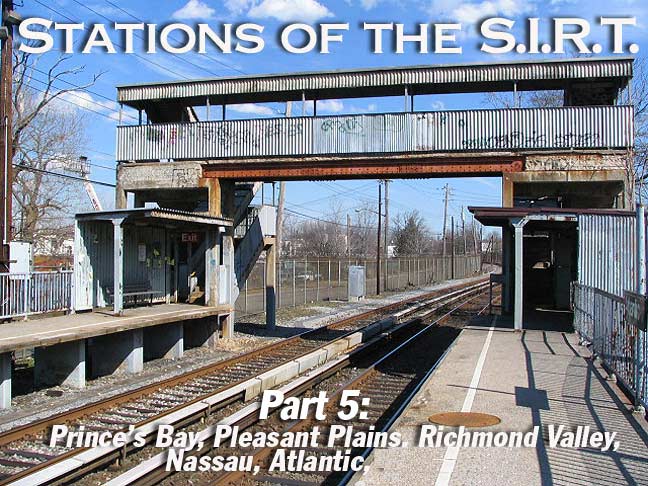
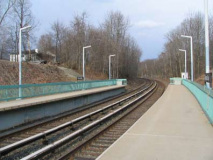
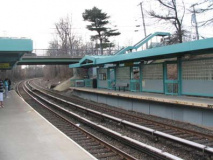
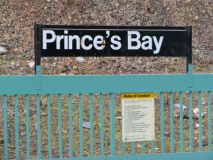
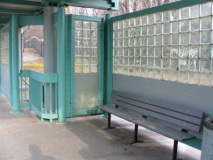
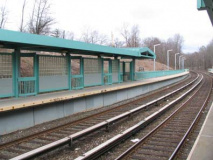
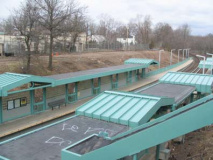
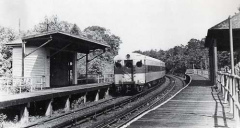
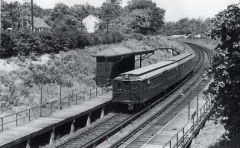



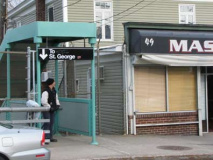





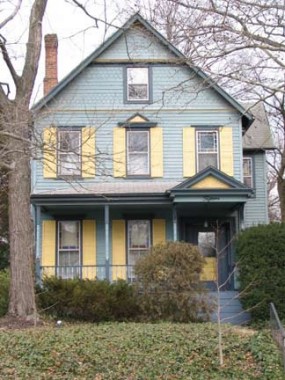




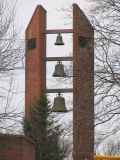


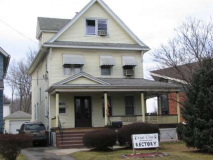
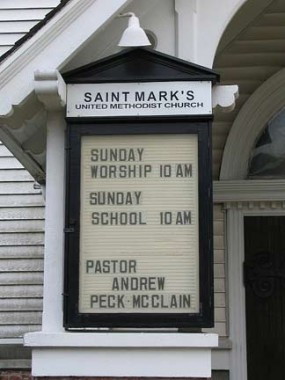

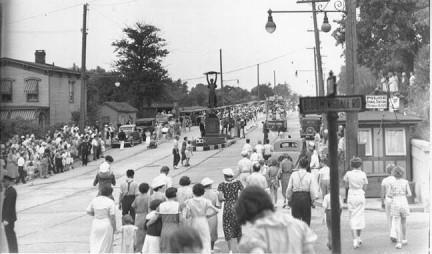
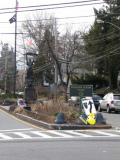
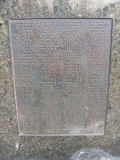

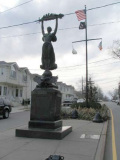
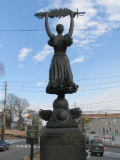
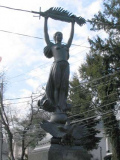


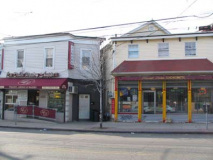


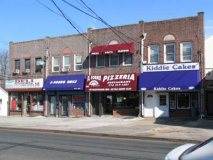
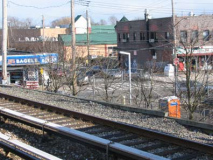
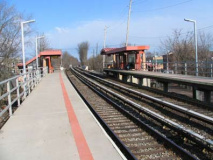
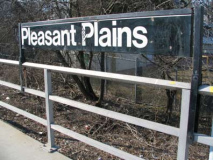
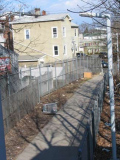






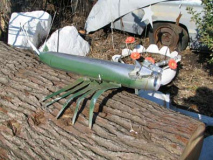





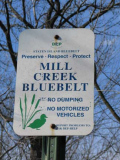
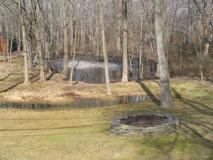




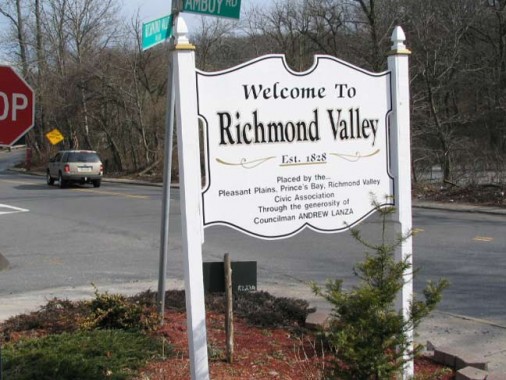

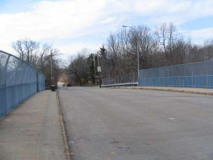


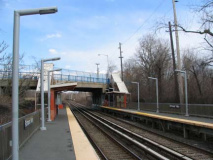
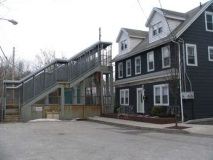
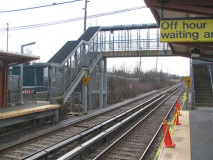
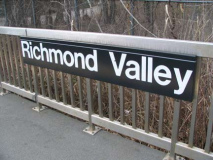


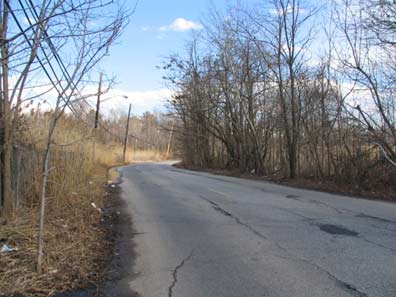



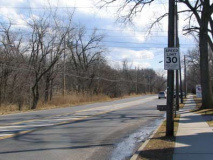





10 comments
WOW….the memories ! I grew up on the South Shore in Huguenot in the mid 1960’s and remember the area around Woodrow look more like the back-woods of a tiny town in Alabama or Mississippi, rather than New York City ! For all its charm and rural touch, the area was rather run-down, shanty and poor and gloomy. The housing stock around Woodrow road, Rossville Avenue , Bloomingdale Rd. (Sandy Ground),and Winant Avenue was nothing more than shanty “Irish” shacks….filthy, low-class dumps….and impoverished ! People long for the good, old days on Staten Island before the bridge. Sure, it was far less populated, with horse stables and open spaces. However, city services were non-existent ! Roads of endless pot holes that could swallow a small car, over-flowing cesspools that created a stench on every corner, mosquitoes the size of small birds, and once again, houses that were real dumps ! When the area started to get developed in the mid 1960’s with the “Knollwood Homes” off Maguire Avenue in 1966 in Rossville and “Durable Homes” on Rathbun Avenue in 1967 in Huguenot, the natives cried the Brooklyn people were going to ruin the area ! …(ethnic slur withheld.) SURE ! When we moved in and the “Italians” bought the bigger, new homes and fixed them up, the “Micks” got ashamed and began fixing up their cape-cods or half-rotted repulsive bungalows. Previously, they had mowed weeds for lawns, dirty curtains in knots, and booze bottles as vases on the window sills ! It did not take long for them to “Wake-Up”, as property values increased dramatically, and suddenly,….they had landscaping, painted up their “dumps” and starting showing a little pride in their homes and surroundings. That was 47 years ago and better ! A lot has changed in half a century ! The area is totally developed now , all the woods, horses and rabbits are long gone ! Sure the area is too crowded now and million dollar-plus McMansions line every other street. However, where does it look exactly the same today, as it did nearly 50 years ago ? Development was inevitable,…..after all, Staten Island is part of New York City and could not remain “isolated” forever !
Durable Homes were built by Henry Wrobel of Queens and his brother was named Arthur and his daughter was named Shelia.He built these original hi-ranch styled homes development on the corner of Rathbun and Huguenot Avenues in 1967. The area was largely undeveloped and woodlands and he built (3) wooden-frame models: “The Arizona” two family hi-ranch that originally sold for $ 32,000. “The Colorado” one family hi-ranch for $ 28,000. and the “The Nevada” one family ranch with basement for $ 25,000. Later, he also introduced a “Broadside” ranch. These were typical Staten Island “suburban-style” ranches with half fronts of field stone or brick and wooden cedar shakes. He built hundreds of them in the area on the South Shore of Staten Island, primarily in Huguenot between Rathbun and Sheldon Avenue and later in the early 1980’s on Ramona Avenue and Lamont Avenue between Ellsworth and Marcy Avenues. He also built a few in Rossville off Foster Road and they featured the “Broadside Ranch”, however, his Nevada model was by far the most popular and least expensive. Also, he built a few on Drumgoole Road East at the Hugenot/Annadale border along the railroad tracks. The prices by today’s standards seem ridiculous….but it was a different time and nearly a half century ago. Of course, as time passed the prices escalated. Today, it is a very good working-class neighborhood and the one-family’s sell for around $ 550,000.,and the two-family around $ 660,000.They were and still are good and big homes !
I remember “HI-ART HOMES” in Huguenot in that very neighborhood where Durable Homes were, too ! They were built at the corner of Sinclair Avenue and Huguenot Avenue. The land there was mostly previously all woods and this builder offered (3) models. The ubiquitous ranch-style one family with basement was by far the most popular and was on the corner. My parents purchased that home in 1970. The other two models were a one family high-ranch with a grey field-stone front and a very large open outside front porch/entranceway that was covered overhead by the home and by the front entry door; (a big waste of space), and the legal two family with a red brick front. Needless to say, these two models did not sell well and only one other one family high-ranch was sold on that block (brown stone) and two other two family’s around the corner (side by side) on Sheldon Avenue were sold. These homes were originally built in 1967-68 and in those days, Huguenot was still very much like the country on the South Shore of Staten Island. Most of the families that purchased the brand-new homes had come from Brooklyn and their teenage children loved playing in the woods, building forts, going down the back roads, playing (and trespassing) in all the new homes and just being young boys (and girls) !
To: Alice Gavvone: Your comment on “Durable Homes” in Huguenot on Silvie is outrageous ! You, my dear ,are mindless and sound like a disgruntled person that would never be satisfied….no matter what ! I never claimed these homes were “custom built” or so fabulous and made of the utmost quality materials either. Durable Homes in Huguenot were no different than any other mass-produced development of that era. It was a long time ago, nearly a half century since he built the original three models in 1967 on the corner of Rathbun and Huguenot Avenues. These hi-ranches were actually priced lower than comparable homes in other parts of Staten Island like Great Kills or New Springville….and were bigger ! All the homes back then were your ubiquitous “cookie-cutter” designs and built with builder’s grade materials. These homes were certainly a step-up from the tiny boxes or unsightly cape-cod style dumps across the street that were built around 1960. The development there is still holding up well, and all the homes have been up-dated and renovated. For your information, what has not been renovated over (several times) in 50 years ? The garbage dump was not even active back when these homes were constructed and there was never an odor that far up, close to the town either ! You are probably one of these bitter idiots that thinks moving to Jersey is your big “dream”…to pay triple the property taxes, get stuck in endless traffic jams on every road and have a big “row” house built on an old toxic-dump site. Furthermore, these homes were all built on your standard 40 x 100 lot…like every fully detached home from those days. They are also worth a small fortune today, the neighborhood is great and fully sewered now ! Staten Island is close to the city and Huguenot is a very sought after and desirable neighborhood. You are obviously a very unhappy soul and have some serious issues to deal with. You are very transparent and apparently missed the boat and sound very bitter…..too bad ! I am guessing you wanted one, but could not get a mortgage, because you had no money ?
What a load of crap ! These homes were the slums of the future ! I am glad I live in my trailer park in Jersey…that’s the place to be !Several old friends had a heck of a time after mistakenly buying from them and all the abatements they had to comply with so they could later resell to get out from under those money-pits..These were all built sub-par with inferior materials., corners weren’t mitered, insects and rodents found easy access -unending problems with roaches and mold has always been a continuing problem. Perspective buyers were shown these houses on ‘upwind days’ so they didn’t know about the stench from the dumps and from the Jersey factories until it was too late.The layout of these homes would never have passed inspection in other states adding nothing to the area but one set of eyesores after another. Houses like these are why other states have community associations to make sure the area isn’t damaged by greedy contractors,These developments were eyesores from the start and the houses so similar, lacking any sort of differentiation that one could come home from a night out and walk not only into a wrong house, but on a wrong block, as they all looked alike !At the time they were built, they were overpriced seemed competitive,but imitated better made homes using inferior materials, not only did they use cheaper materials but cheaper labor – mostly off the books labor – so often homeowners later were upset when within a few months after moving in, would find pipes breaking, hinges falling out, lights shorting and by winter-weather; the heat would break and foundations cracking and leaking water into the basements.These were lemons of houses and still continue to be. What a load of crap. Several old friends had a heck of a time after mistakenly buying from them and all the abatements they had to comply with so they could later resell to get out from under those money-pits ! These were all built sub-par with inferior materials., corners weren’t mitered, insects and rodents found easy access -unending problems with roaches and mold has always been a continuing problem. Perspective buyers were shown these houses on ‘upwind days’ so they didn’t know about the stench from the dumps and from the Jersey factories until it was too late.
The layout of these homes would never have passed inspection in other states adding nothing to the area but one set of eyesores after another. Houses like these are why other states have community associations to make sure the area isn’t damaged by greedy contractors,
These developments were eyesores from the start and the houses so similar, lacking any sort of differentiation that one could come home from a night out and walk not only into a wrong house but on a wrong block as they all looked alike !At the time they were built, they were overpriced seemed competitive but imitated better made homes using inferior materials, not only did they use cheaper materials but cheaper labor – mostly off the books labor – so often homeowners later were upset when within a few months after moving in, would find pipes breaking, hinges falling out, lights shorting and by winter, the heat would break. These were lemons of houses and still continue to be. They stunk of cesspool overflow and Anyone buying now, buy for location only, as these most likely have to be gutted the entire way before you can fix them up to code~!The greedy contractors who built these houses should have been indicted ! They were also built so close to one another that you can do little more than barbeque on your patio – that is if the neighbors don’t call the fire dep’t for filling their homes up with smoke. Don’t fall for anything built originally by Henry Wrobel of Durable Homes…they did and still do, “stink on ice !” Durable is something they never were !
nor ever will be without a complete renovation.
Guess building inspectors were easier to buy off or deceive back in those days.
What a rippoff to think people have to pay so much for land just to have to repair or rebuild over them.What an insult that they have to pay to tear down the junk made by Wrobel of Queens.
Anyone buying now, buy for location only, as these most likely have to be gutted the entire way before you can fix them up to code~!
The greedy contractors who built these houses should have been indicted.
They were also built so close to one another that you can do little more than barbeque on your patio – that is if the neighbors dont call the fire dept for filling their homes up with smoke~!
Dont fall for anything built originally by Henry Wrobel of Durable Homes
because Durable is something they never were
nor ever will be without a complete renovation.
Guess building inspectors were easier to buy off or deceive back in those days.
What a rippoff to think people have to pay so much for land just to have to repair or rebuild over them.What an insult that they have to pay to tear down the junk made by Wrobel of Queens.
Poor planning and greedy developers way back in the 1960’s and 70’s meant whole tracts of virgin woodland on the South shore of the island were leveled and hundreds of “army barrack” style rows of wooden framed homes were built…street after street, from Oakwood way down to Huguenot and from Willowbrook to New Springville. This mass development was before people were conscious of the environment like today and protected trees and woodlands from such relentless bulldozing. Many cried that these homes wold become the slums of the future, too. Fortunately, this is not the case, and 50 years later these homes remain well cared after, and their neighborhoods being some of the most desirable and high priced ones in the city. The ubiquitous legal 2 family and detached home that was being built like crazy from the mid 1960’s cost about $ 32,000 to purchase in 1967 and today can fetch upwards of $ 750,000 in today’s real estate market.
I recently sold my two family that was built by Wrobel for $ 850,000. I bought the “Arizona 2-family hi-ranch” brand new on the corner in 1970 for $ 41,000.in Huguenot. It’s a big house ! I never had any problems and feel these homes were no different than any other development of mass produced, wood framed houses seen all over Staten Island from the 1960’s and 70’s. These homes were far fro custom built,were cookie cutters and built with the cheapest builders quality materials and yes, they all looked the same. But what housing development of that era on the island did not ? As time passed, people renovated. I installed all new windows,and doors,siding,pavers driveway,brand-new custom kitchens with cherry cabinets, granite counter tops and Viking appliances. New bathrooms with Kohler fixtures and custom ceiling to floor tile,etc. Most homes in the area are now on their 3rd and 4th set of new roofs,siding,windows,concrete and kitchens/baths. It has been 52 years since Durable Hoes opened on that corner in Huguenot in 1967….tie moves on (and fast) !
I bought the broadside one-family ranch built by Henry Wrobel in Woodrow way back in 1972. It was brand-new and on Woodrow Road and Foster Road. He built mostly the Nevada one family low ranch with basement here and two (2) family homes around the corner on Vineland Avenue. Way back then, there was nothing there but woods. This was his phase-2 of Durable Homes,constructed in 1967 in Huguenot. He did not have the broadside model originally available when he first broke ground. He had (3) models;a two family hi-ranch, one family hi-ranch and one family low ranch with basement.He literally built rows and rows of hundreds of the one family low ranch model fro Huguenot Avenue to Ellsworth Avenue and right to Marcy Avenue. Starting in 1967 and right through to the id 1970’s in what was all undeveloped virgin woodland. I paid $ 52,000.00 in 1972 on a 50 x 100 foot lot. I sold it in 2017 for $ 749,000.00 45 years later and retired to Arizona. The area now is totally built-up, with the sprawling Woodrow Shopping Plaza across the street. Few there today recall when Woodrow Road was a one lane and mostly dirt road. Thick forest on either side and there were horses kept on people’s property like the McMaloon family and the area resembled the dirt roads of impoverished rural Mississipppi more than New York City.The Sandy Ground was still isolated and roads like Rossville Avenue and Winant Avenue and Correll Avenue were mostly unpopulated and deserted backwaters. Eileen Nebel lived there and she was a librarian in JHS-7 in the early 1970’s..
Does anyone reading this perhaps remember “Brunch ‘n Browse ?” It was located in the Annadale Town in the 1960’s and early 70’s. It was a restaurant that served breakfast and lunch. Run by a woman that had up in the attic all sorts of Staten Island historic memorabilia for people to peruse through after their meals. The treasure-trove contained things like: old Staten Island Advance pages and clippings of notable events, bric-a-brac, old photos of well-known sites around the island, old family and neighborhood photos on the island, menus from by-gone restaurants, books, pictures of the Staten Island Railroad through the decades, and so on ! If you do,please leave a comment on this blog and share your good,old memories,too.
I lived on Sinclair Avenue off Huguenot Avenue as a kid.My parents bought the brand-new house in 1968 for $ 26,000.I was only 15 years old.The development was from “Hi-Art Homes” when we moved to “the country” from Mapleton,Brooklyn and I loved it ! Huguenot Avenue was all woods across the street and all the way down to Arthur Kill Road way back then. My friend David Speer lived on Woodrow Road,not far from the intersection.We had a fort n the woods between Sheldon and Sinclair Avenue with the Benvenuto Brothers.Kevin and Brothie.The first three houses on Sinclair were model homes from 1967.Afterwards,they were sold in 1968 and John Firstman lived on the corner.In the thitd red-brick front 2 family was Rosemarie and in the fourth house was the Galante family,My friend Laura Nichols lived a few doors down.The neighborhood was new and everyone was getting to know each-other.We kids all went to Elias Bernstein JHS-7 and it was a great place to live ! We hung out on the “back-roads” and thought we were way kool because we smoked cigarettes.Blue-Boy was a perpetual hippy,and lived on the Woodrow Road at the corner of Marcy Avenue by the Joyce Brothers.Charlie and Stanley Marshall lived on Edgregrove Avenue,and Jerry O’Hanlon on Huguenot Avenue between Ionia and Edgegrove Aves.These are just a few of the names I recall today of the area kids from the late 1960’s to early 70’s….and oten wonder where they are today in 2020,over 50 years later ?